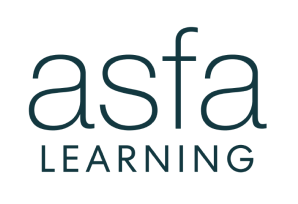3 July 2014
New ASFA analysis reveals the real story about where super tax concessions flow
Amidst ongoing public debate regarding the equity of superannuation tax concessions, a report released by the Association of Superannuation Funds of Australia (ASFA) today provides a clear picture of where superannuation tax concessions flow.
The report found that the tax concessions applied to concessional superannuation contributions are not significantly skewed towards high-income earners, and, in fact, support the bulk of the working community to save for their retirement.
Based on an analysis of superannuation contributions and tax concessions by taxable income bracket, around 75 per cent of the tax concessions applied to contributions go to those paying either the 30 per cent or 38 per cent marginal tax rate.
However, the report also found that, when it comes to the tax concessions applied to superannuation investment earnings, a large portion of tax concessions flow to middle-to-high-income earners, with 65 per cent flowing to those earning over $80,000, and 23 per cent to those with a taxable income of more than $180,000.
ASFA CEO Ms Pauline Vamos says that development of public policy regarding the equity and sustainability of the superannuation system must be based on sound assumptions and facts.
“This report clearly shows that when it comes to the tax concessions applied to superannuation concessional contributions, the majority flow to those in the middle-income bracket, who make up a large part of the Australian workforce.
“This provides evidence that the contribution caps, which have been lowered substantially over the past few years, are working to reduce the concessional contributions made by upper-income earners, while continuing to provide support to the majority of Australians to help them save for their retirement.”
Notwithstanding this, Ms Vamos says there are various policies that could be adjusted to increase the equity of the system.
“While tax concessions are a very important feature of our superannuation system, once people have accumulated more than enough money to fund a comfortable lifestyle in retirement, they no longer require government assistance. With this in mind, there are a number of ways government policy could be adjusted to make sure that people are using superannuation for retirement purposes, and not as a wealth accumulation tool.”
The report makes a number of recommendations in this area, including applying a lifetime cap to non-concessional contributions, and looking at ways to remove the concessional tax treatment for very high superannuation balances in excess of $2.5 million.
“This would help ensure that people are using superannuation as a means to provide enough income for a comfortable retirement, and not for wealth accumulation or estate planning purposes,” says Ms Vamos.
The report also evaluates the superannuation system against the key objectives under which it was established, concluding that it is successfully raising retirement incomes, increasing national savings and decreasing government expenditure on the Age Pension.
It found that, by 2026, a person who retires at the Age Pension qualifying age with an average super balance would receive around 57 per cent of their income from superannuation, and around 40 per cent of retirees in this age group would be fully self-funded.
Superannuation is also reducing government expenditure on the Age Pension, with around $7 billion currently saved annually – a figure that is projected to rise substantially as the system matures.
“For Australians to experience a comfortable lifestyle in retirement, they cannot rely on the Age Pension alone. As the system matures and average balances increase, the community will benefit from higher incomes in retirement provided by superannuation savings,” says Ms Vamos.
Click here for a full copy of the report.
For further information, please contact:
Lisa Chikarovski, Media Manager, 0451 949 300.
About ASFA
ASFA is the peak policy, research and advocacy body for Australia’s superannuation industry. It is a not-for-profit, sector-neutral, and non-party political national organisation, which aims to advance effective retirement outcomes for members of funds through research, advocacy and the development of policy and industry best practice.



